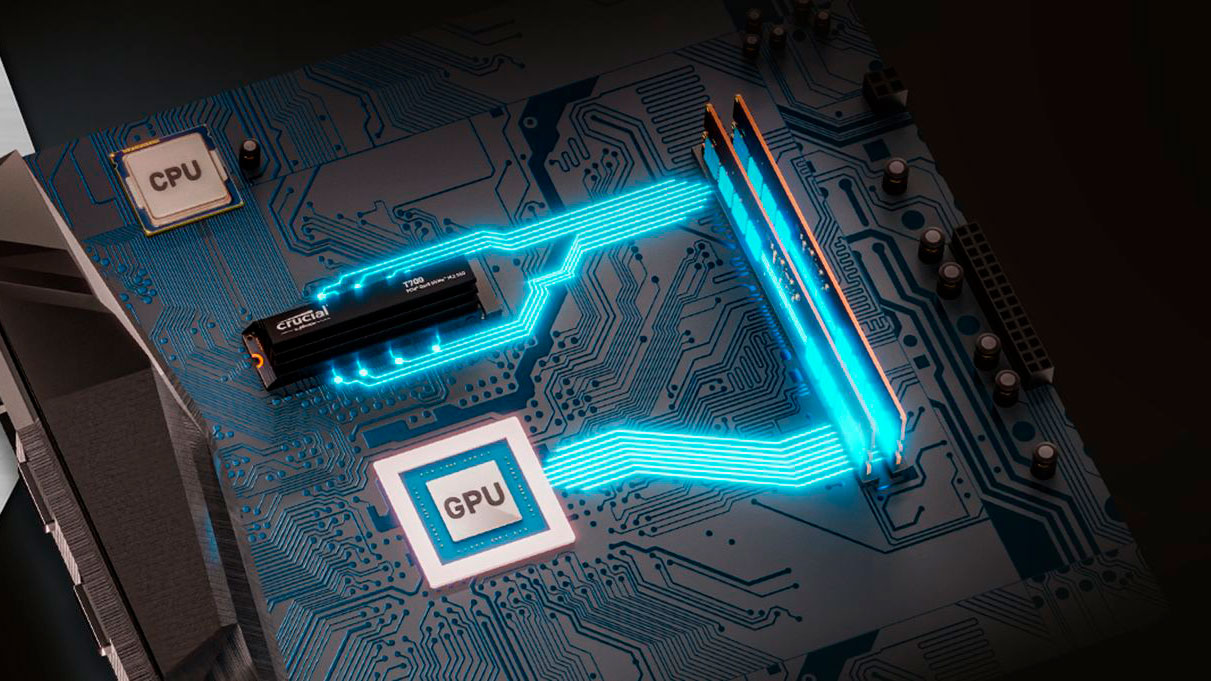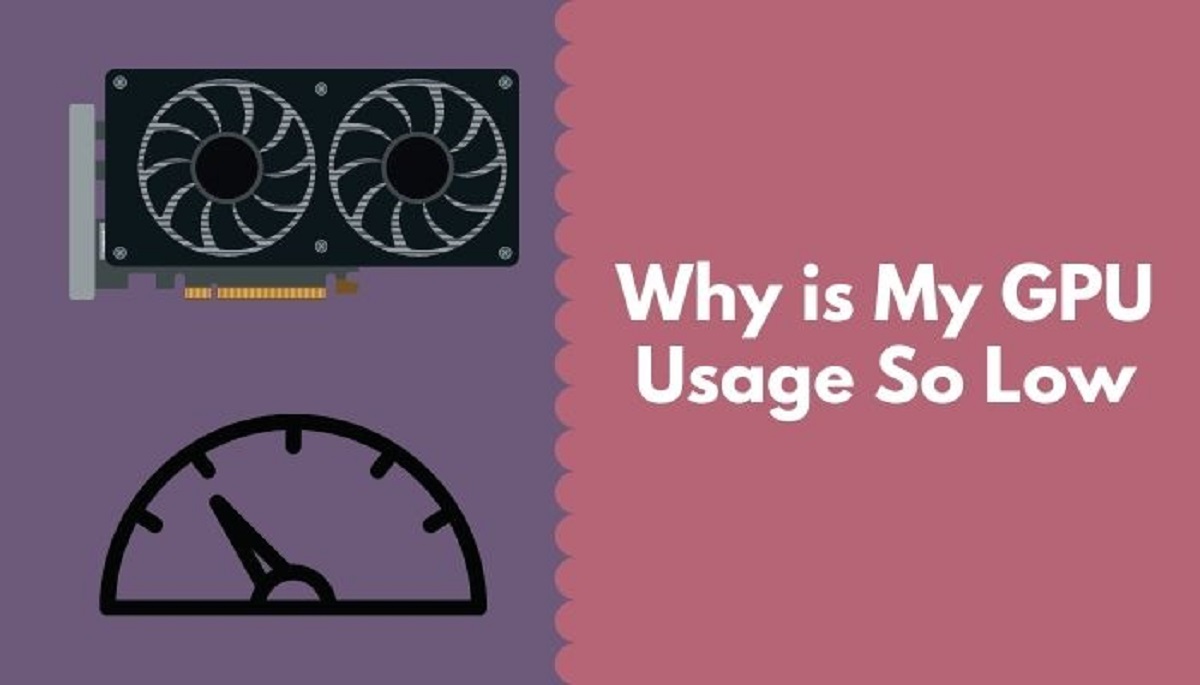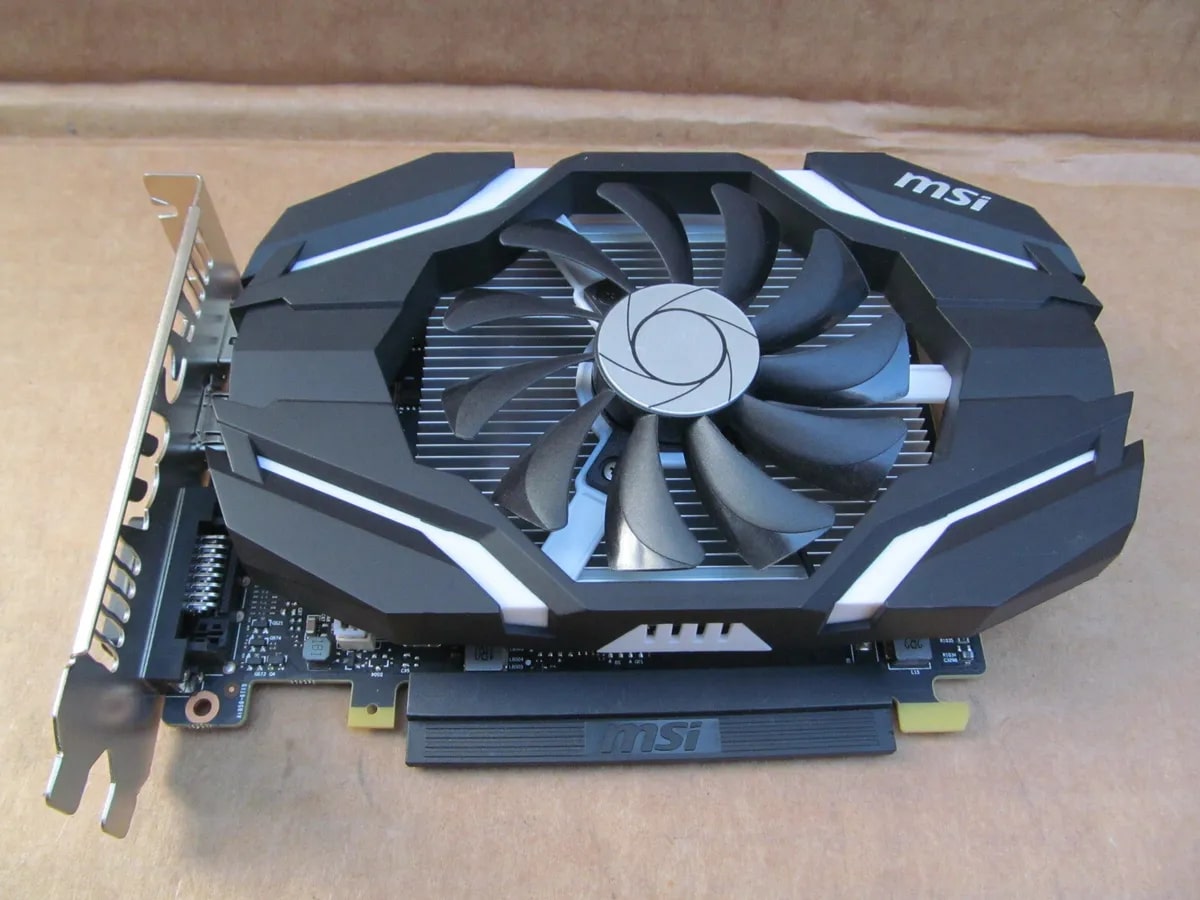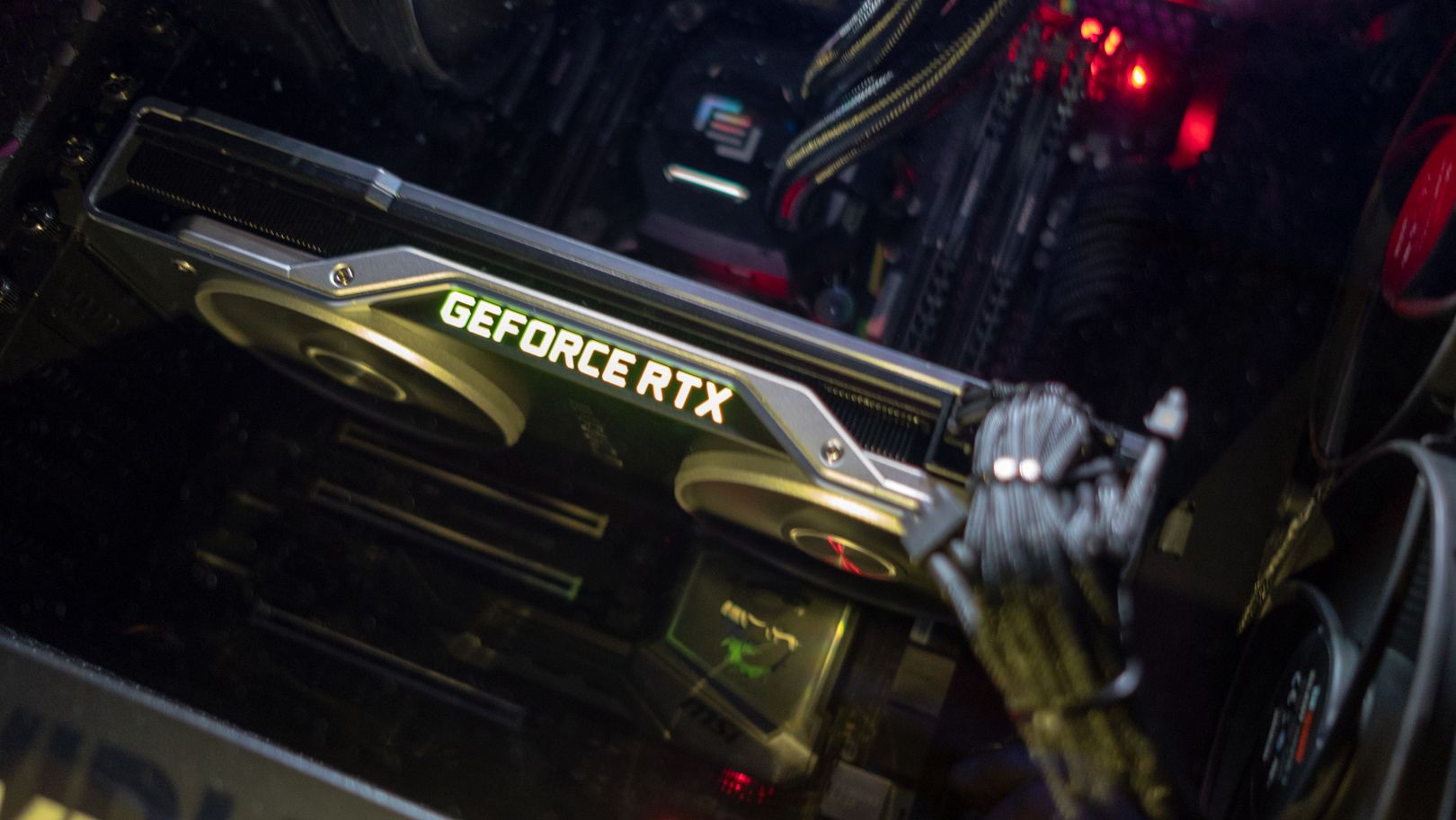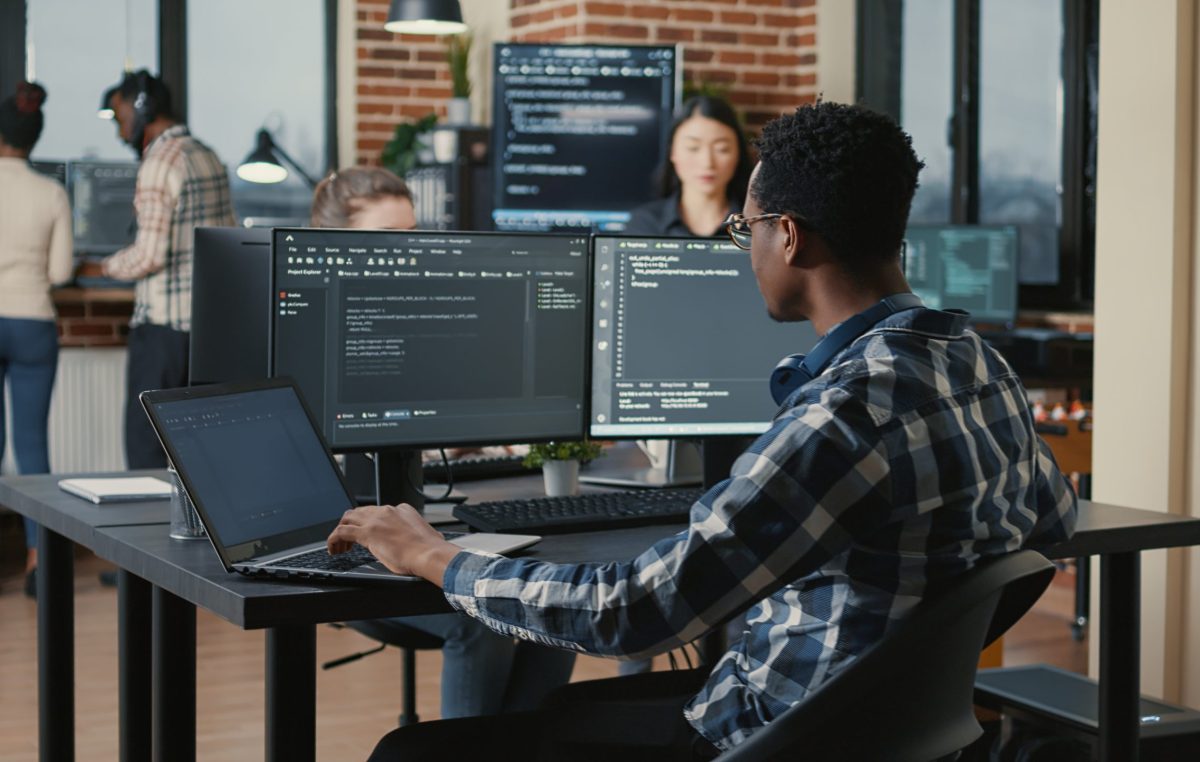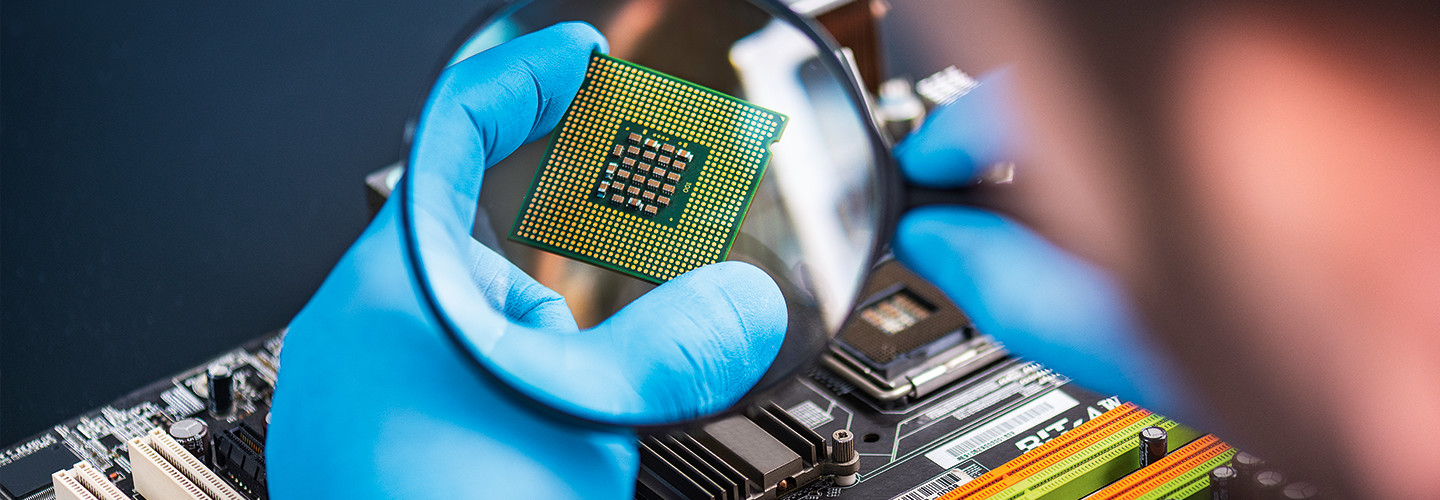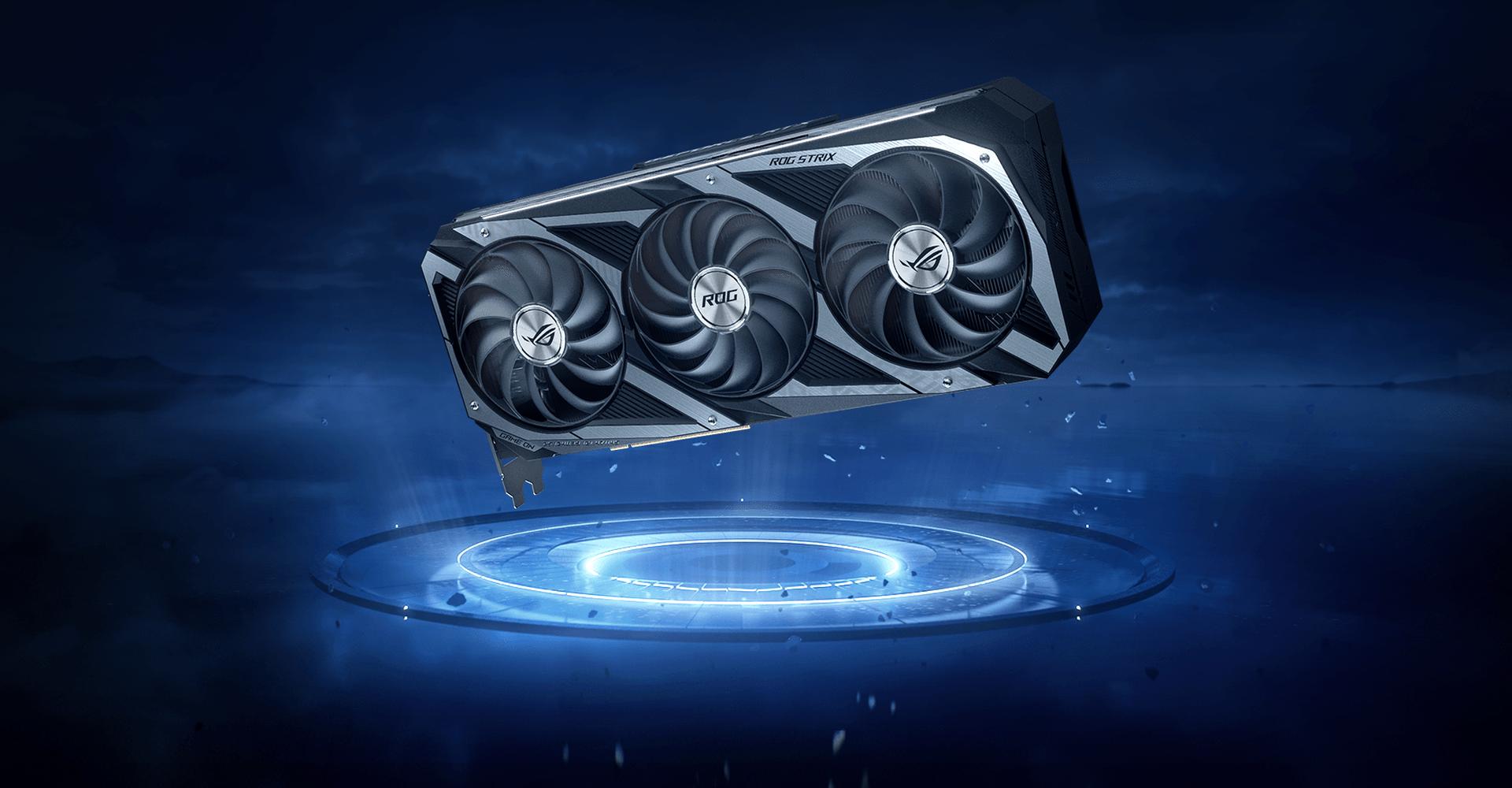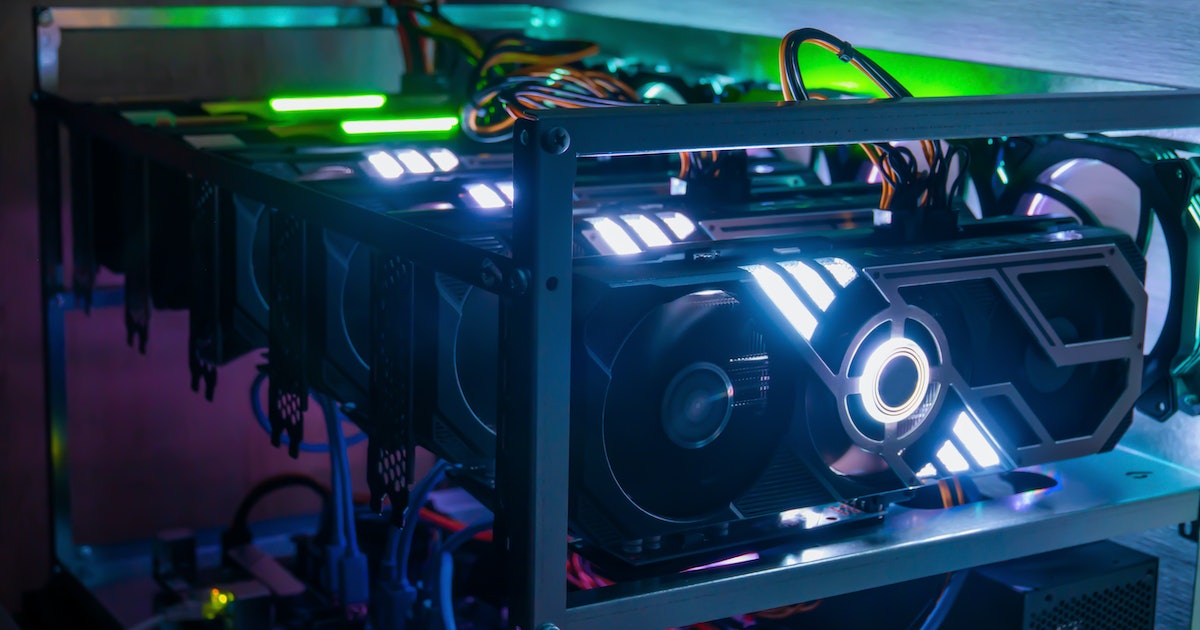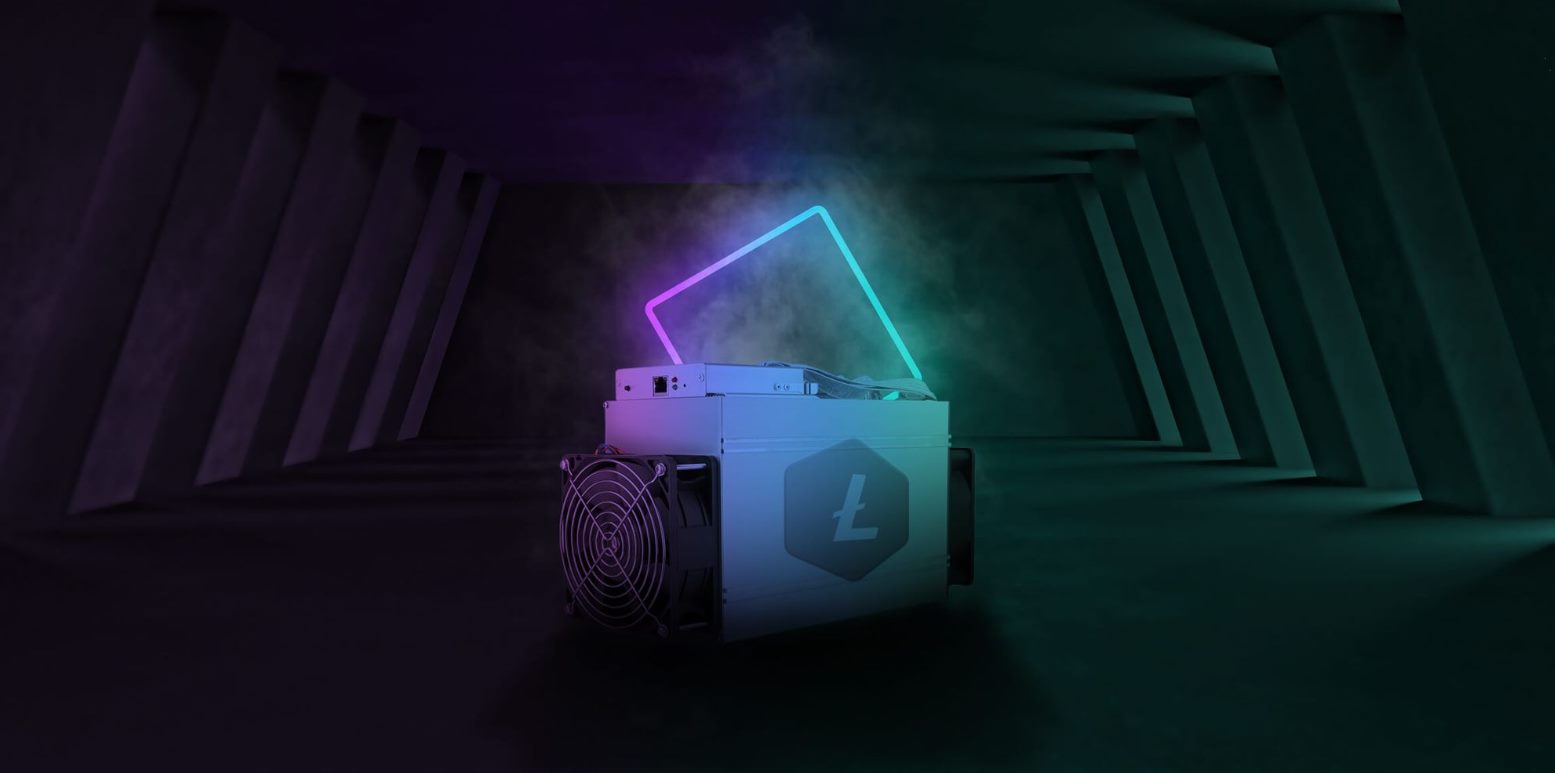Introduction
Modern computers and devices rely heavily on Graphics Processing Units (GPUs) to handle complex graphical tasks such as rendering high-definition graphics, running graphic-intensive applications, and even mining cryptocurrencies. GPU usage refers to the extent to which the GPU’s resources are being utilized to perform these tasks.
Understanding GPU usage and determining the ideal percentage at which a GPU should run is crucial for optimizing performance and ensuring smooth operation. Whether you are a gamer, professional graphic designer, or involved in scientific research, knowing how to monitor and manage GPU usage can greatly enhance your computing experience.
GPU usage is typically measured as a percentage, with 0% indicating little to no usage and 100% indicating complete utilization of the GPU’s capabilities. But what is considered an ideal GPU usage percentage? And how can you monitor and optimize GPU usage to achieve the best performance?
In this article, we will delve into the details of GPU usage, explore the factors that affect it, and provide insights on monitoring and optimizing GPU performance. By the end, you will have a better understanding of what percentage your GPU should run at for different tasks and how to maximize its potential.
Understanding GPU Usage
GPU usage refers to the amount of computational work that a GPU is performing at any given time. When a GPU is engaged in a task, it allocates its resources, such as cores, memory, and clock speed, to process and render graphics. The level of GPU usage determines how efficiently the GPU is being utilized to complete these tasks.
GPUs are commonly used in a variety of applications, including gaming, video editing, 3D modeling, scientific simulations, and machine learning. Each of these tasks requires a different level of GPU usage. For example, gaming and video editing tend to be more GPU-intensive, whereas general computing tasks may not require significant GPU usage.
GPU usage is generally represented as a percentage, with 0% indicating little or no usage, and 100% indicating full utilization of the GPU’s capabilities. Monitoring GPU usage can provide valuable insights into the performance of your system, allowing you to identify potential bottlenecks or resource-intensive applications.
It’s important to note that GPU usage is dynamic and can fluctuate based on the demands of the tasks being performed. For instance, during graphically demanding scenes in a game or while rendering complex animations, the GPU usage may spike and remain at a high percentage. On the other hand, during periods of inactivity or less demanding tasks, the GPU usage may drop significantly.
Understanding GPU usage is not only beneficial for optimizing performance but also for troubleshooting performance issues. By monitoring GPU usage, you can pinpoint applications or processes that are placing a heavy load on the GPU and adjust settings or resources accordingly.
In the next section, we will explore why GPU usage is important and the impact it has on overall system performance.
Why is GPU Usage Important?
GPU usage plays a critical role in determining the overall performance and efficiency of your system. Here are several reasons why GPU usage is important:
1. Optimizing Performance: Monitoring GPU usage allows you to identify whether your GPU is being fully utilized or if there is potential for improved performance. By maximizing GPU usage, you can ensure that your system is running at its peak capability, resulting in smoother graphics, faster rendering times, and improved overall application performance.
2. Preventing Bottlenecks: When running graphic-intensive applications, inadequate GPU usage can lead to performance bottlenecks. By monitoring GPU usage, you can identify if the GPU is becoming a limiting factor in your system’s performance. If the GPU usage is consistently low while other resources are maxed out, it may be necessary to upgrade your GPU or optimize your application settings.
3. Identifying Resource-Intensive Applications: GPU usage monitoring allows you to identify applications or processes that place a heavy load on the GPU. This information can be valuable for optimizing your system settings, adjusting graphics options, or closing unnecessary applications to free up GPU resources for more important tasks.
4. Preventing Overheating: High GPU usage can generate significant heat, especially during intense gaming sessions or prolonged rendering tasks. Monitoring GPU usage can help you identify when the GPU is operating at high levels for an extended period, allowing you to take steps to prevent overheating and potential damage to your system.
5. Energy Efficiency: GPUs consume power, and excessive GPU usage can result in higher energy consumption. By monitoring GPU usage, you can identify applications or processes that are unnecessarily stressing the GPU, allowing you to make adjustments to save energy and prolong battery life in laptops or mobile devices.
6. Diagnosing Performance Issues: In the event of performance issues or unexpected slowdowns, GPU usage monitoring can provide valuable data for troubleshooting. By analyzing the GPU usage patterns, you can identify potential conflicts, driver issues, or software limitations that may be affecting performance.
Understanding the importance of GPU usage allows you to make informed decisions about optimizing performance, adjusting settings, and allocating resources effectively. In the following section, we will explore what percentage your GPU should run at for optimal performance in different scenarios.
Ideal GPU Usage
Determining the ideal GPU usage percentage can be a subjective matter, as it heavily depends on the specific tasks you are performing and the capabilities of your hardware. However, there are some general guidelines to consider when assessing ideal GPU usage:
For gaming and graphics-intensive tasks, it is generally recommended to aim for a GPU usage percentage in the range of 70% to 100%. This ensures that the GPU is being fully utilized to deliver smooth gameplay, high frame rates, and visually stunning graphics. If your GPU usage is consistently below this range, it may indicate that your system is not optimized to handle the demands of the game, and you may need to adjust graphics settings or consider upgrading your GPU.
On the other hand, for less demanding tasks such as web browsing or general desktop use, a GPU usage percentage below 50% is typically sufficient. These tasks do not require the full utilization of the GPU’s capabilities and can easily be handled by integrated graphics or lower-end GPUs.
It’s worth noting that achieving and maintaining 100% GPU usage is not always necessary or even desirable. In some cases, it may indicate that the GPU is being overworked, resulting in increased power consumption, heat generation, and potential performance instability. It’s recommended to monitor and ensure that the GPU usage remains stable under heavy loads and doesn’t spike excessively.
Furthermore, the ideal GPU usage percentage can vary depending on the specific application or software being used. Certain software, like video editing or 3D rendering applications, may benefit from higher GPU usage percentages to speed up rendering times and improve productivity. Alternatively, other applications that rely more on CPU power may have lower GPU usage requirements.
Ultimately, finding the ideal GPU usage percentage involves striking a balance between efficient resource utilization, performance optimization, and system stability. It’s important to monitor GPU usage in real-time and adjust settings as needed to achieve the desired balance for your specific use case.
Next, we will explore the factors that can affect GPU usage and how to monitor it effectively.
What Percentage Should GPU Run At?
There is no one-size-fits-all answer to what percentage a GPU should run at, as it depends on various factors such as the specific tasks being performed, hardware specifications, and personal preferences. However, here are some general guidelines for different scenarios:
- Gaming: In gaming, it’s generally recommended to aim for a GPU usage percentage in the range of 70% to 100%. This ensures that the GPU is being fully utilized to provide smooth gameplay, high frame rates, and visually immersive experiences. If your GPU usage consistently falls below this range, it may indicate a bottleneck that could be addressed by optimizing game settings or upgrading your GPU.
- Video editing and 3D rendering: For resource-intensive tasks like video editing or 3D rendering, it is beneficial to have the GPU running at a high percentage, preferably between 80% and 100%. This level of GPU usage allows for faster rendering times and improved productivity, especially when working with complex visual effects or large video files.
- General desktop use: For everyday tasks like web browsing, document editing, and multimedia playback, a GPU usage percentage below 50% is typically sufficient. These tasks do not require the intense graphical processing power of gaming or rendering, and lower GPU usage can contribute to energy efficiency and reduced heat generation.
It’s worth noting that these are general suggestions, and the ideal GPU usage percentage may vary depending on your specific hardware, software, and personal preferences. Some individuals may prefer to have their GPU running at maximum capacity at all times, while others may prioritize energy efficiency or noise reduction.
Furthermore, it’s essential to consider the overall system balance. A high GPU usage percentage may indicate that the GPU resources are being fully utilized, but it may also mean increased power consumption, heat generation, and potential performance instability if the cooling system or power supply is not adequate.
To determine the optimal GPU usage percentage for your specific needs, it’s recommended to monitor GPU usage in real-time using software tools or utilities provided by your GPU manufacturer. By observing the GPU usage during different tasks and adjusting settings accordingly, you can achieve the desired balance between performance and efficiency.
In the next section, we will discuss the factors that can impact GPU usage and how to effectively monitor and optimize it.
Factors Affecting GPU Usage
Several factors can influence GPU usage, and understanding these factors can help you optimize your GPU’s performance. Here are some key factors that affect GPU usage:
1. Task Complexity: The complexity of the task being performed greatly impacts GPU usage. More demanding tasks, such as high-resolution gaming, 3D rendering, or complex simulations, require higher GPU usage to handle the increased computational load. On the other hand, simpler tasks like web browsing or word processing typically require lower GPU usage.
2. Software Optimization: The optimization level of the software or application being used can significantly affect GPU usage. Well-optimized applications are designed to take advantage of the GPU’s capabilities and can achieve higher GPU usage without sacrificing performance. Poorly optimized software may result in lower GPU usage or inefficient resource allocation.
3. Graphics Settings: Adjusting graphics settings within applications or games can have a significant impact on GPU usage. Higher graphics settings, such as higher resolutions, anti-aliasing, or advanced graphical effects, tend to increase GPU usage as the GPU has to work harder to render the visuals. Lowering graphics settings can reduce GPU usage and improve performance on less powerful GPUs.
4. Hardware Limitations: The capabilities and specifications of your GPU can affect its maximum usage. Lower-end GPUs or older models may have lower processing power and memory, leading to lower GPU usage compared to high-end GPUs. Similarly, insufficient cooling or power supply may limit the GPU’s capabilities and result in lower GPU usage to prevent overheating or stability issues.
5. Parallel Processing: Many modern GPUs are designed to perform parallel processing, allowing them to handle multiple tasks simultaneously. GPU usage can be affected by the ability of the software or applications to effectively utilize this parallel processing capability. Optimized software and programming techniques can maximize GPU usage by efficiently distributing the workload across different GPU cores.
6. External Factors: Other external factors, such as background processes, system resource allocation, or driver issues, can impact GPU usage. For example, if your system is running multiple resource-intensive applications simultaneously, the GPU’s resources may be divided, resulting in lower GPU usage for each task.
It’s important to consider these factors and their impact on GPU usage when monitoring and optimizing your GPU’s performance. By recognizing the influencing factors, you can make informed decisions such as adjusting graphics settings, upgrading hardware, or optimizing software to achieve the desired GPU usage for your specific tasks.
In the next section, we will explore how to effectively monitor GPU usage to gain insights into your system’s performance and resource utilization.
Monitoring GPU Usage
Monitoring GPU usage in real-time can provide valuable insights into your system’s performance and resource utilization. By keeping an eye on GPU usage, you can identify potential bottlenecks, optimize settings, and ensure that your GPU is running efficiently. Here are some effective methods for monitoring GPU usage:
1. Task Manager or Activity Monitor: The built-in Task Manager on Windows or Activity Monitor on macOS provides basic GPU usage monitoring. Simply open the utility, go to the performance tab, and look for the GPU section. You will be able to see real-time GPU usage percentages for each application or process utilizing the GPU.
2. GPU Manufacturer’s Software: Most GPU manufacturers provide dedicated software tools to monitor and optimize GPU performance. For example, NVIDIA’s GeForce Experience or AMD’s Radeon Software allow you to monitor GPU usage, adjust graphics settings, and update drivers. These tools provide more detailed information and customization options compared to the built-in monitoring utilities.
3. Third-Party Monitoring Software: Various third-party software applications, such as MSI Afterburner, HWMonitor, or GPU-Z, offer comprehensive GPU monitoring capabilities. These tools provide detailed information about GPU usage, temperature, clock speed, memory usage, and fan speed. They often include customizable overlays or on-screen displays that can show GPU usage in real-time while you are gaming or performing other tasks.
4. Benchmarking Applications: Benchmarking tools, such as 3DMark or FurMark, not only allow you to assess your system’s performance but also provide GPU usage monitoring during the benchmarking process. Running benchmark tests can help you understand how your GPU performs under different workloads and identify any performance issues.
5. Application-Specific Monitoring: Some applications or games have built-in performance monitoring tools that allow you to track GPU usage while using those specific software. These tools are especially useful for assessing GPU usage in scenarios where high-demand applications or specific settings are in use.
When monitoring GPU usage, it’s important to analyze the data in conjunction with other performance metrics, such as CPU usage, memory usage, and temperature. This can help you identify overall system bottlenecks and make informed decisions to optimize performance.
By monitoring GPU usage regularly, you can gain insights into the utilization of your GPU’s resources, identify potential performance issues, and make necessary adjustments to maximize performance and efficiency.
In the next section, we will discuss optimal GPU usage percentages for different applications and offer tips to maximize GPU performance in various scenarios.
Optimal GPU Usage for Different Applications
The optimal GPU usage percentage can vary depending on the specific application or task you are performing. Different applications have different GPU requirements, and understanding these requirements can help you achieve the best performance. Here are some guidelines for optimal GPU usage in various scenarios:
1. Gaming: For gaming, aiming for a GPU usage percentage in the range of 70% to 100% is generally recommended. This ensures that the GPU is fully utilized to deliver smooth gameplay, high frame rates, and visually stunning graphics. Adjusting graphics settings and optimizing in-game options can help achieve the desired GPU usage and maintain a balance between performance and visual quality.
2. Video Editing and Rendering: When working with video editing or 3D rendering applications, a higher GPU usage percentage is recommended for faster processing and rendering times. Aim for a GPU usage in the range of 80% to 100% to leverage the GPU’s power effectively and maximize productivity. Utilize software options that allow GPU acceleration to make the most of your GPU’s capabilities.
3. Machine Learning and AI: GPU usage is crucial in machine learning and artificial intelligence tasks. These tasks heavily rely on parallel processing, and GPUs excel in handling such workloads. In this scenario, utilizing the GPU to its maximum capacity, preferably around 90% to 100%, can greatly enhance the speed and efficiency of data processing and model training.
4. Web Browsing and Desktop Use: For everyday tasks like web browsing, document editing, or multimedia playback, a GPU usage percentage below 50% is generally sufficient. These tasks don’t require extensive GPU resources, and lower GPU usage can contribute to energy efficiency and reduce heat generation. However, ensuring that GPU drivers are up to date is still important for smooth display and multimedia playback.
5. Software Development and Compilation: GPU usage is typically not crucial in software development and compilation tasks unless specific applications or frameworks utilize GPU acceleration. In most cases, the GPU usage percentage will be low during these tasks, as they rely more on the processing power of the CPU. However, consider optimizing software settings or using GPU-accelerated compilers if available to potentially enhance the compilation speed.
Remember that these guidelines are general recommendations, and optimal GPU usage may vary depending on your specific hardware, software, and personal preferences. Monitoring real-time GPU usage and experimenting with different settings can help you find the optimal GPU usage for your specific applications.
In the next section, we will provide some tips to maximize GPU performance, regardless of the application or task you are performing.
Tips to Maximize GPU Performance
To get the most out of your GPU and maximize its performance, here are some effective tips to consider:
1. Update GPU Drivers: Keeping your GPU drivers up to date is important as new driver updates often include performance optimizations and bug fixes. Regularly check for driver updates from your GPU manufacturer’s website or utilize their software tools for automated driver updates.
2. Optimize Graphics Settings: Adjusting graphics settings within games or applications can significantly impact GPU performance. Experiment with different settings to find the right balance between visual quality and performance. Lower settings for less demanding tasks can lighten the GPU load, while higher settings for more demanding tasks can fully utilize the GPU’s capabilities.
3. Manage Background Processes: Close any unnecessary or resource-intensive background processes or applications that are consuming GPU resources. These processes can compete for GPU usage and impact overall performance.
4. Monitor GPU Temperatures: Excessive heat can affect GPU performance and stability. Ensure proper cooling by keeping your system’s airflow clean and unobstructed. Consider using software tools to monitor GPU temperatures and adjust fan speeds if necessary.
5. Overclocking: Overclocking your GPU can provide a performance boost by increasing clock speeds and memory frequencies. However, this should be done cautiously, as it may void warranties and potentially lead to instability or overheating issues. Proper research and monitoring are crucial when attempting to overclock your GPU.
6. Utilize GPU Acceleration: Many applications, especially in video editing, rendering, and machine learning, support GPU acceleration. Enable GPU acceleration in these applications to offload processing from the CPU to the GPU, resulting in improved performance and faster processing times.
7. Proper Power Supply: Ensure that your GPU is receiving adequate power from the power supply unit (PSU). Insufficient power supply can lead to GPU performance degradation and instability. Consider upgrading your PSU if you are experiencing frequent performance issues.
8. Regular System Maintenance: Perform regular system maintenance such as cleaning out dust, updating system software, and optimizing storage. A well-maintained system can run more efficiently, resulting in better GPU performance.
9. Upgrade Hardware: If your GPU is outdated or struggling to keep up with the demands of modern applications, consider upgrading to a more powerful GPU. Upgrading other components, such as the CPU and memory, can also have a significant impact on overall system performance.
10. Consider SLI or CrossFire: If your motherboard supports it, utilizing SLI (NVIDIA) or CrossFire (AMD) technology allows you to combine multiple GPUs for increased performance. However, not all applications benefit from multi-GPU setups, and supporting software may vary.
By following these tips, you can optimize your GPU’s performance, enhance system responsiveness, reduce bottlenecks, and achieve smoother visuals and faster processing times in various applications.
In the final section, we will recap the key points covered in this article and summarize the importance of understanding and optimizing GPU usage.
Conclusion
Understanding GPU usage and knowing the ideal percentage at which a GPU should run is essential for optimizing performance and ensuring smooth operation in various applications. By monitoring GPU usage and adjusting settings accordingly, you can maximize your GPU’s potential and achieve the best performance for your specific tasks.
Factors such as task complexity, software optimization, graphics settings, hardware limitations, parallel processing, and external factors can affect GPU usage. By considering these factors and monitoring GPU usage in real-time, you can identify potential bottlenecks, troubleshoot performance issues, and make informed decisions to optimize performance.
The optimal GPU usage percentage varies depending on the application or task being performed. For gaming and graphics-intensive tasks, aiming for a GPU usage percentage in the range of 70% to 100% is recommended, while lower GPU usage may suffice for less demanding tasks like web browsing or desktop use.
Tips to maximize GPU performance include updating GPU drivers, optimizing graphics settings, managing background processes, monitoring GPU temperatures, overclocking cautiously, utilizing GPU acceleration, ensuring proper power supply, performing regular system maintenance, and considering hardware upgrades if necessary.
By following these tips and understanding the nuances of GPU usage, you can enhance your computing experience by achieving smoother gaming, faster rendering times, improved productivity, and overall optimized system performance.
Remember to consider your specific hardware, software, and personal preferences when determining the ideal GPU usage for your tasks, as individual needs may vary. Regularly monitor GPU usage, stay informed, and adapt settings accordingly to make the most of your GPU’s capabilities.







